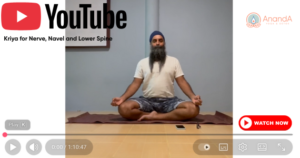Is Vinyasa Yoga a Form of Strength Training?
When most people think of strength training, they picture lifting weights or using resistance machines at the gym. But what about yoga? Specifically, can Vinyasa yoga be considered a form of strength training?
What is Vinyasa Yoga?
Vinyasa yoga is a style of yoga that links breath with movement. In a typical Vinyasa class, you’ll flow from one pose to another, using your breath to guide the transitions. While it is often associated with flexibility and mindfulness, Vinyasa can also be physically demanding. Poses like plank, downward-facing dog, and warrior require muscle engagement to hold, and flowing between them builds endurance and strength over time.
Vinyasa Yoga and Strength Training: A Surprising Connection
Strength training is traditionally defined as any physical exercise that uses resistance to induce muscular contraction, which builds the strength, anaerobic endurance, and size of skeletal muscles. Typically, this resistance comes from external weights or resistance bands. But here’s where Vinyasa yoga comes in.
While Vinyasa doesn’t involve lifting dumbbells, your body weight itself serves as resistance during the practice. Holding poses such as plank or chaturanga (a yoga push-up), as well as transitioning through movements like sun salutations, recruits major muscle groups, especially in the core, arms, and legs.
In fact, research shows that bodyweight exercises, such as those found in Vinyasa yoga, can provide many of the same benefits as more traditional forms of strength training, including increased muscle tone, endurance, and bone density. So, yes, Vinyasa yoga can be considered a form of strength training, though it may not be as targeted as traditional weightlifting.
Myth-Busting: Are Stretching and Strengthening Opposites?
One of the most pervasive myths in fitness is that stretching and strengthening are opposites—essentially, that if you’re working on flexibility, you’re not building strength, and vice versa. However, this couldn’t be further from the truth, and both Jenni Rawlings and Jules Mitchell, prominent voices in the yoga and biomechanics space, are helping to challenge this misconception.
Jenni Rawlings emphasizes that many yoga poses classified as “stretching” also require a great deal of strength. Take a deep hamstring stretch, for example. The muscles aren’t just passively being pulled; they’re actively working to stabilize the body. This is especially true when you move in and out of poses dynamically, as is often the case in Vinyasa yoga.
Jules Mitchell, a yoga teacher and biomechanics expert, takes this idea further by arguing that stretching and strength training are interconnected. According to her, a good stretch doesn’t just lengthen the muscles; it also requires them to contract and produce force. This means that even though you might feel like you’re just “stretching” in yoga, you’re actually engaging in strength-building activities too. Stretching, especially in yoga, can therefore have strengthening effects when done with intention and mindfulness.
Why Vinyasa Yoga Should be Viewed as Strength Training
Vinyasa yoga offers a unique blend of flexibility and strength-building that is often overlooked in the fitness world. You may not be pushing heavy weights or using resistance bands, but the strength gained from bodyweight movements in yoga can lead to improvements in muscle endurance, stability, and functional fitness.
Here’s why Vinyasa yoga should be part of your strength-training routine:
- Muscle Activation: Vinyasa sequences demand continuous activation of muscles. In poses like plank, chaturanga, and warrior, you’re engaging your core, arms, and legs to stabilize and move through transitions. This creates a functional form of strength that supports everyday movement.
- Improved Balance and Coordination: The dynamic nature of Vinyasa yoga, which involves transitioning between poses and holding them for brief periods, improves neuromuscular coordination and balance. Unlike lifting weights in static motions, Vinyasa challenges your body to strengthen while moving, making it a highly functional form of strength training.
- Body Awareness and Injury Prevention: Because Vinyasa yoga integrates breath and movement, it increases body awareness. This heightened awareness of your own movement patterns, combined with increased strength, helps prevent injury by promoting better alignment and functional movement patterns.
- Progressive Overload: Although Vinyasa doesn’t involve adding external weights, you can still experience progressive overload by holding poses for longer periods, increasing the intensity of transitions, or exploring more advanced postures. Just as you might increase the weight you lift in a gym, you can intensify your Vinyasa practice over time to build greater strength.

Integrating Vinyasa Yoga into Your Strength Training Routine
If you’re looking to integrate Vinyasa yoga into your strength training routine, start by thinking of it as complementary to traditional resistance training. While yoga may not offer the same muscle hypertrophy (growth) benefits as heavy weightlifting, it adds value by strengthening stabilizing muscles, increasing endurance, and improving mobility.
Practical Tips:
- Supplement traditional strength workouts: Use Vinyasa yoga on rest days to engage in active recovery while still building strength and flexibility.
- Focus on alignment: Make sure you’re engaging the correct muscles in each pose to ensure you’re reaping the strength benefits.
- Explore more challenging postures: As your practice deepens, explore poses like arm balances or inversions, which require significant strength.
In conclusion, Vinyasa yoga is more than just a flexibility workout; it is a holistic practice that can also serve as a form of strength training. By incorporating bodyweight resistance, enhancing muscle endurance, and activating deep stabilizer muscles, Vinyasa can play a vital role in any well-rounded fitness regimen. And, as experts like Jenni Rawlings and Jules Mitchell highlight, stretching and strengthening are not opposing forces—rather, they work together to improve overall strength, flexibility, and functional fitness.





